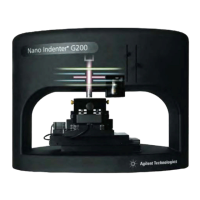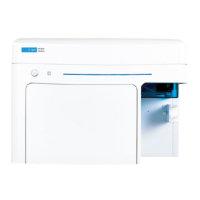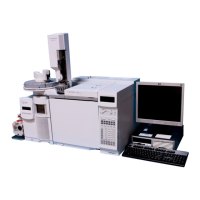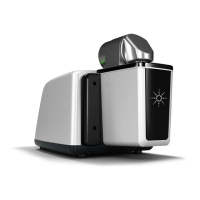Theory 7
Agilent Nano Indenter G200 User’s Guide 7-7
Contact Depth
The next step in the procedure is to determine the depth over which the
test material makes contact with the indenter, h
c
. The contact depth, h
c
,
is generally different from the total penetration depth, and is estimated
using:
(10)
In Equation 10, e is a constant that depends on indenter geometry. For
cones, e is 0.72, and for spheres, e = 0.75. There is empirical
justification for using e = 0.75 for Berkovich and Vickers indenters as
well.
Equation 10 is based on elastic contact theory, but it works
surprisingly well, even when the contact causes significant plastic
deformation. For example, a soft metal experiences very little elastic
recovery as the indenter is withdrawn, and so the unloading curve is
nearly vertical (very large S). Thus, the second term in
Equation 10 is
small, and the contact depth is approximately equal to the total depth as
one might expect. Note that
Equation 10 states that the contact depth is
always less than the total depth of penetration; it cannot account for the
plastic phenomenon of pile-up.
Projected Contact Area
Finally, the projected contact area, A, is calculated by evaluating an
empirically determined area function at the contact depth, h
c
; that is:
(11)
The area function, A = f (d), also known as the shape function or tip
function, relates the cross-sectional area of the indenter to the distance,
d, from its tip. For more information on determining the area function,
see
Frame Stiffness and Area Function Calibration in Chapter 6,
"Commonly Used Procedures".

